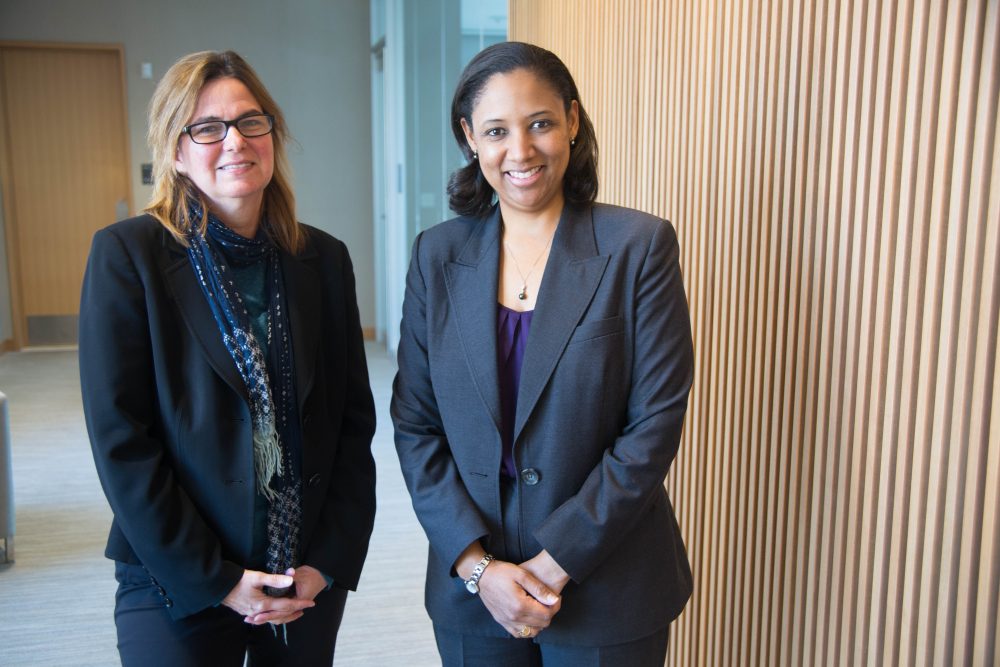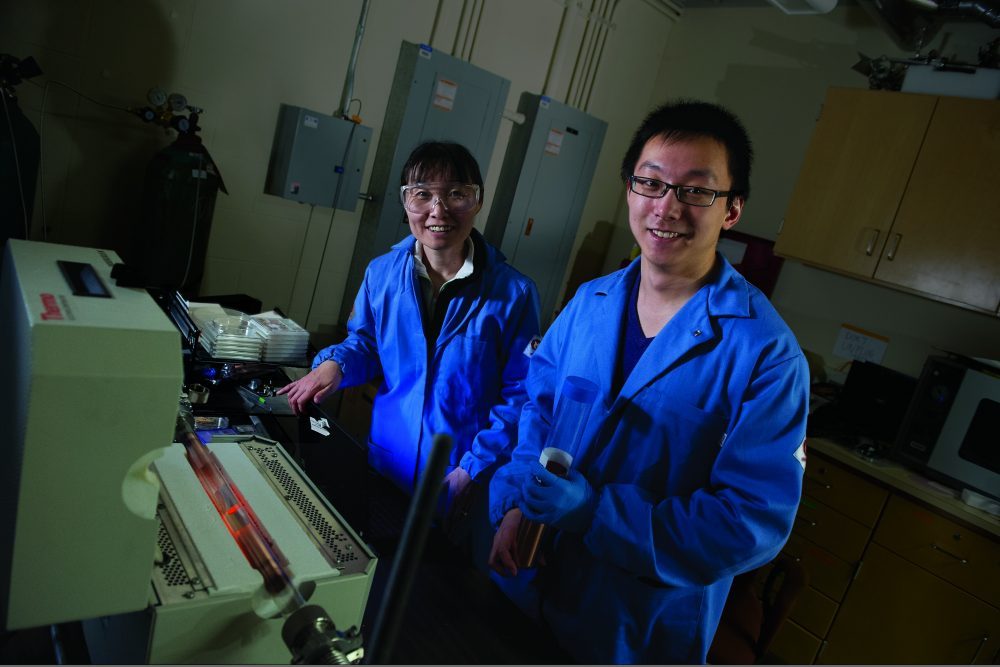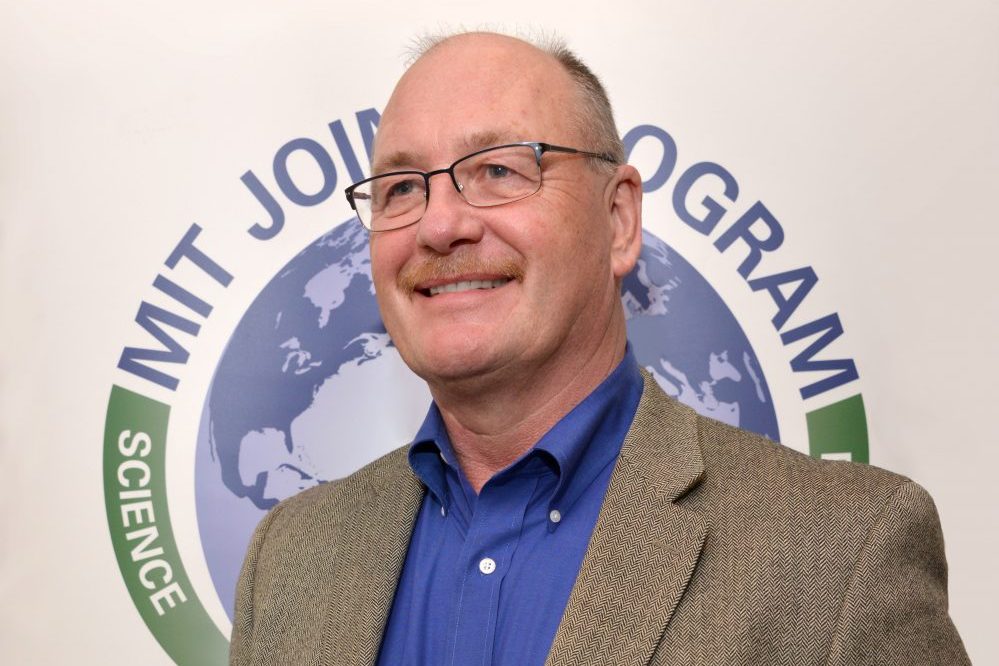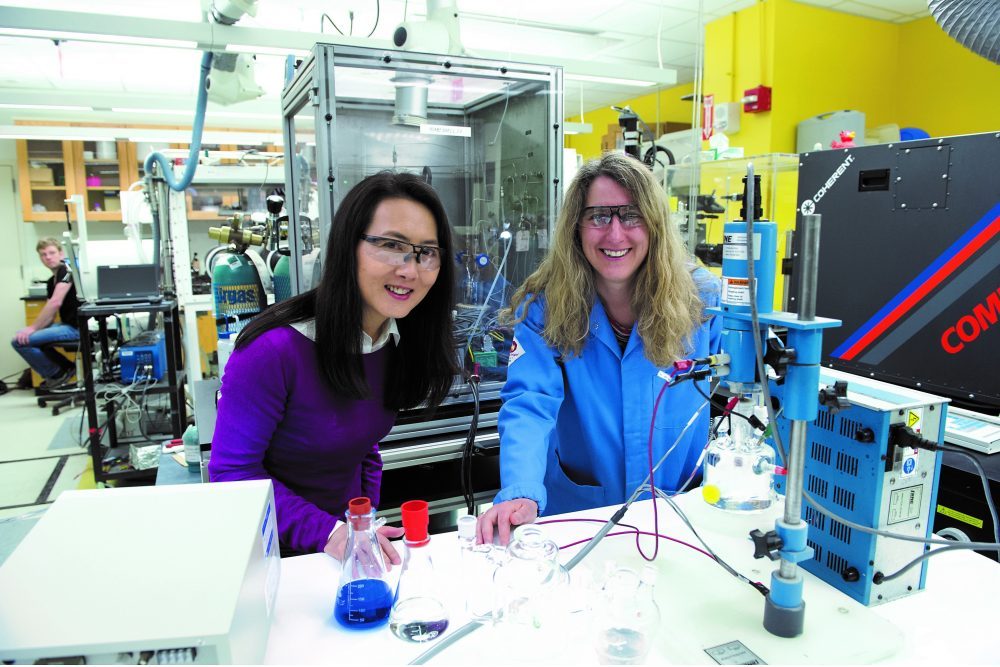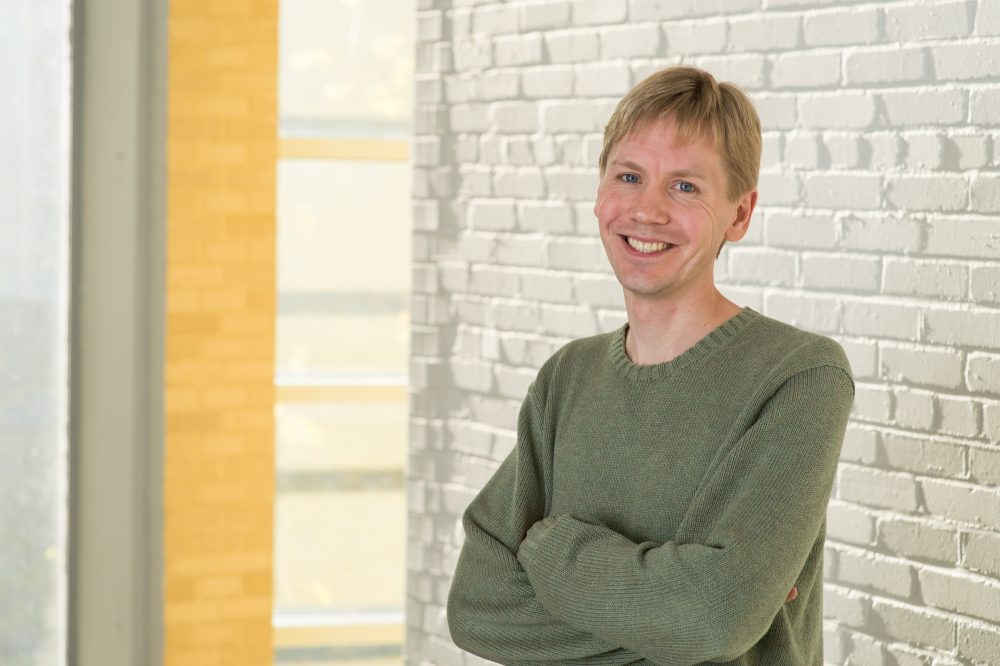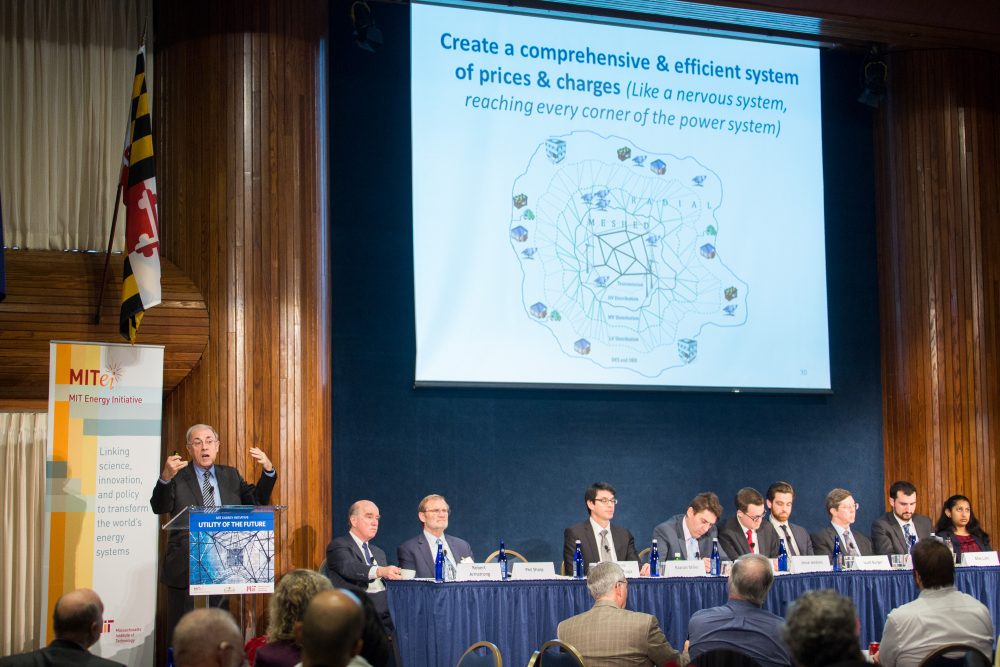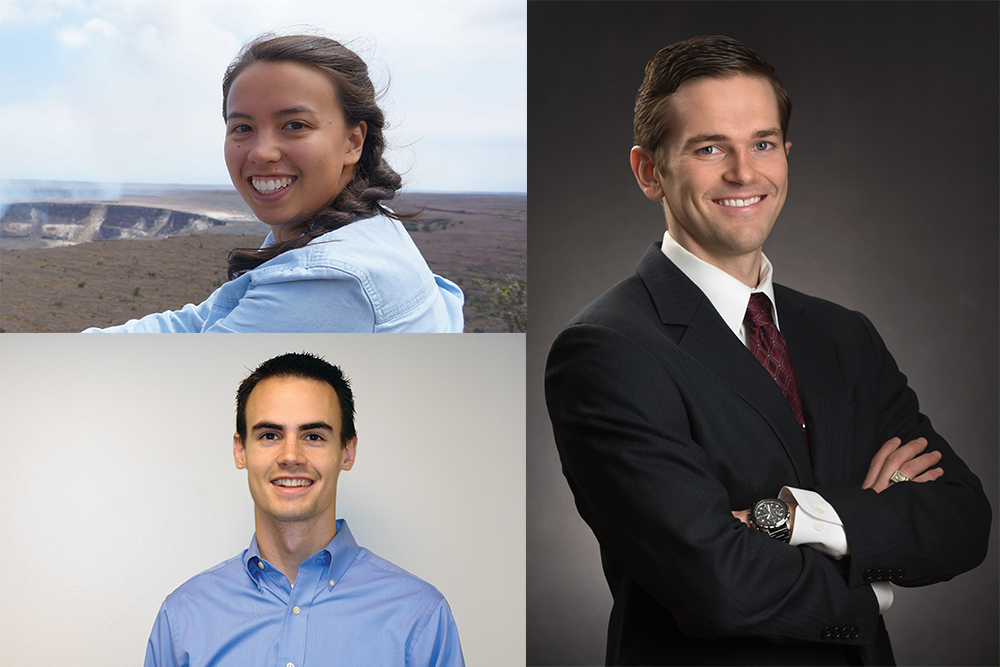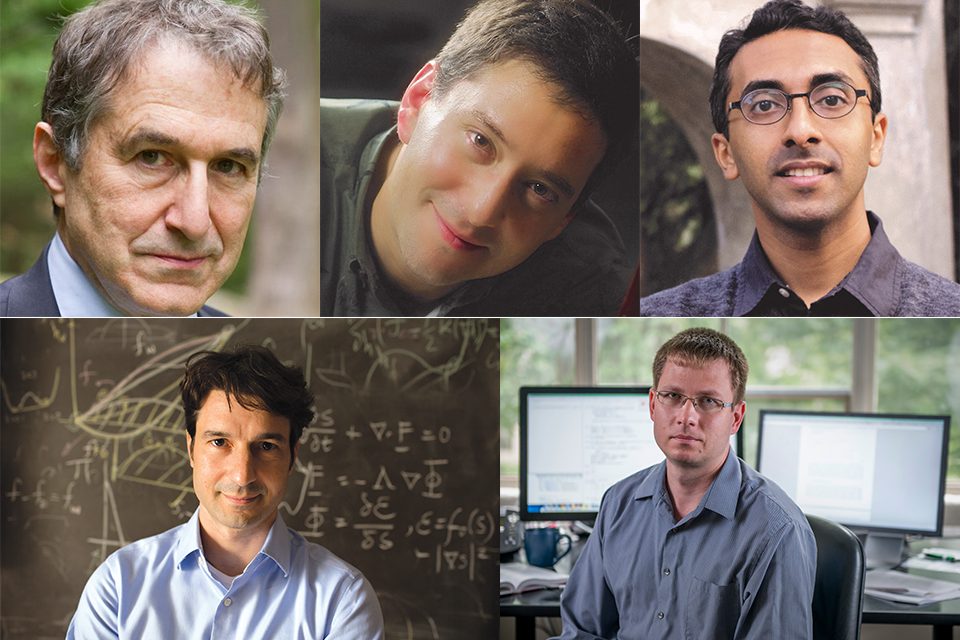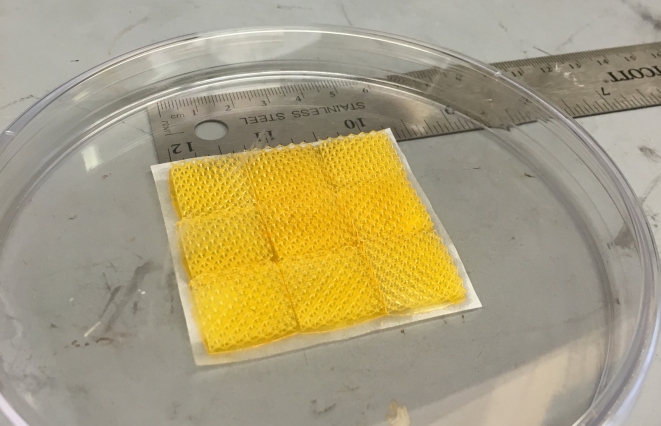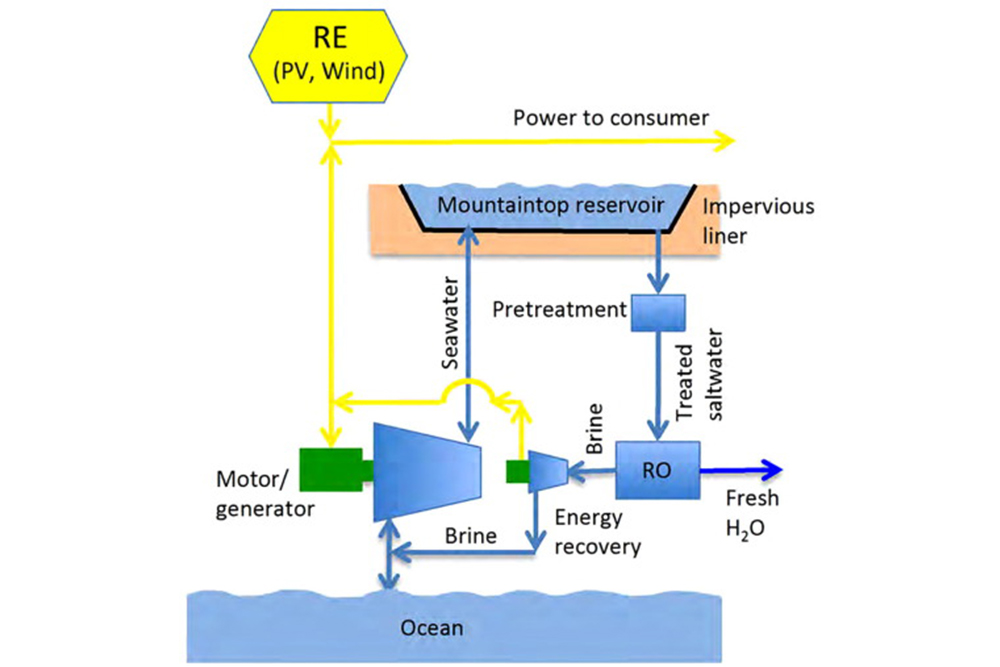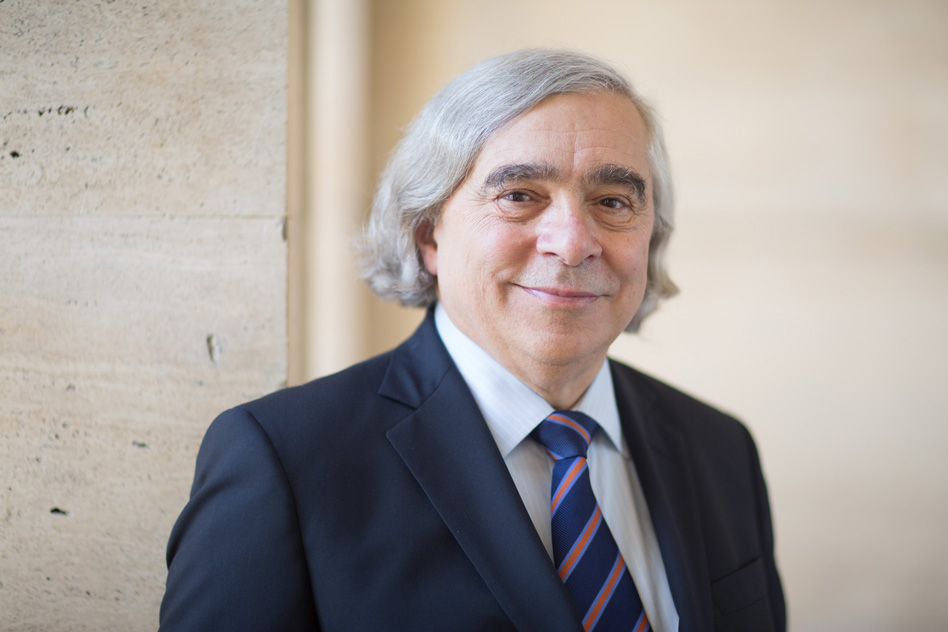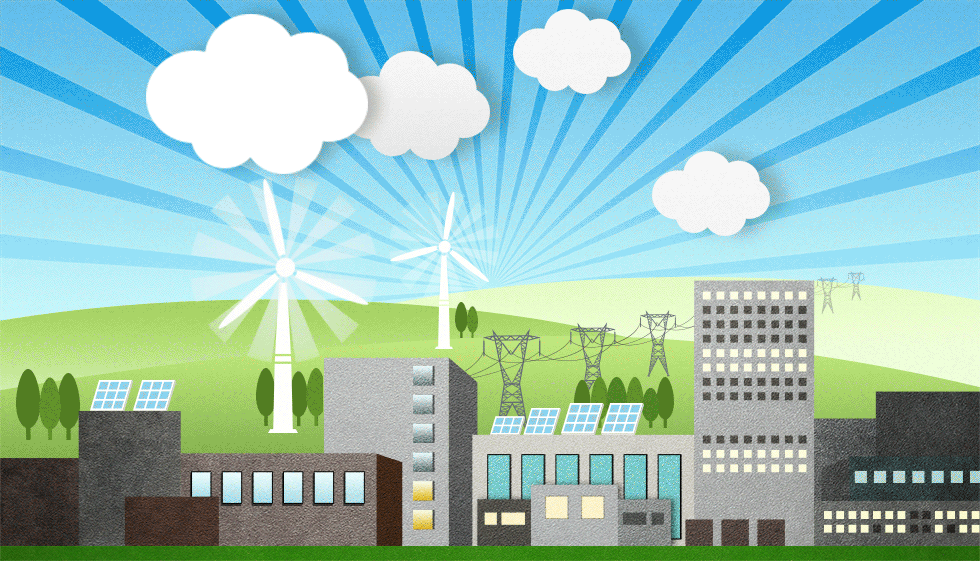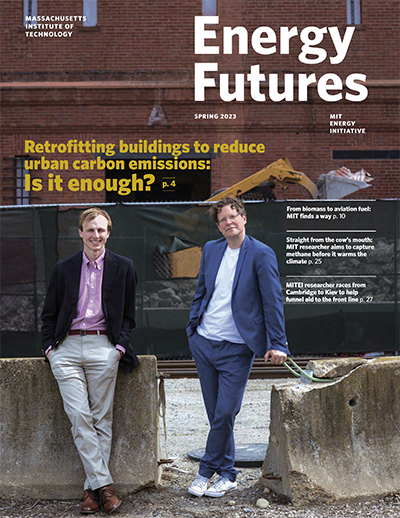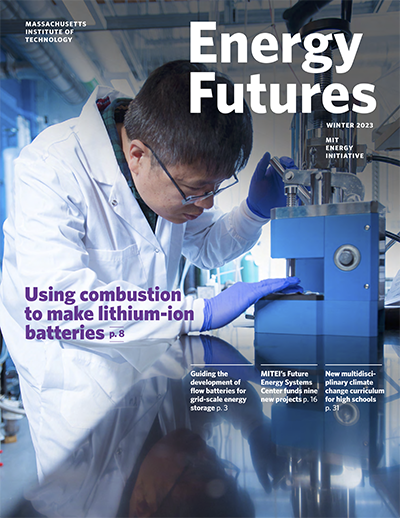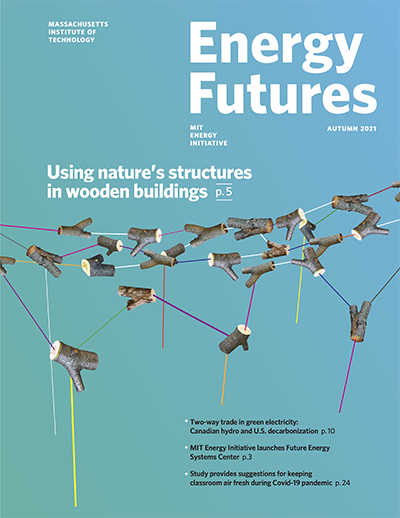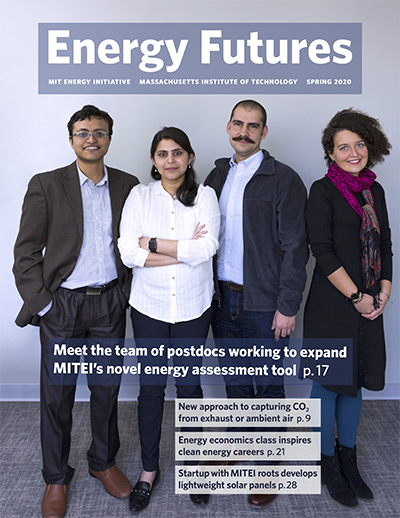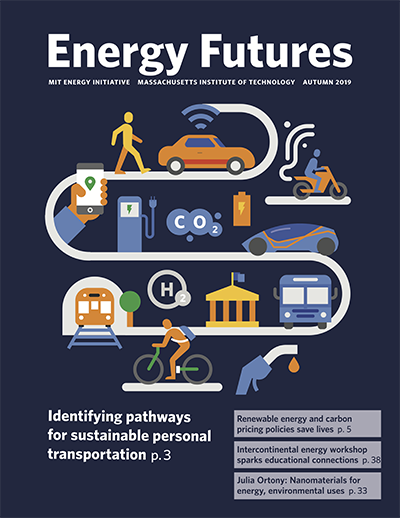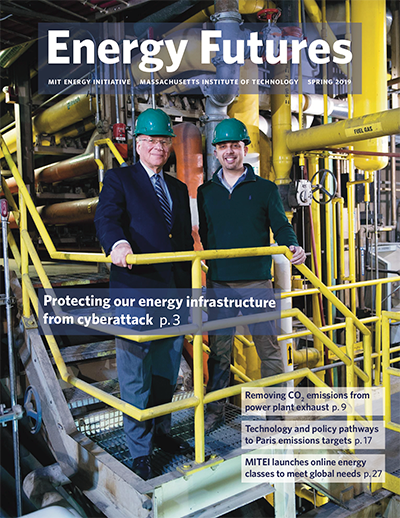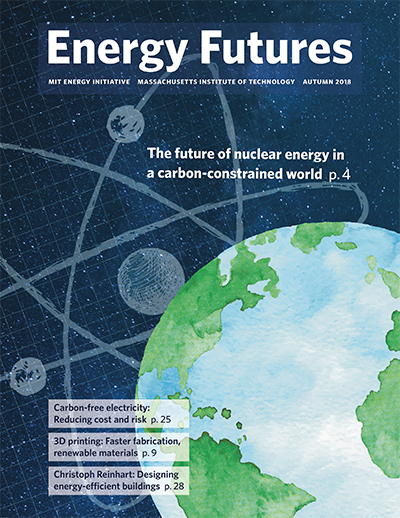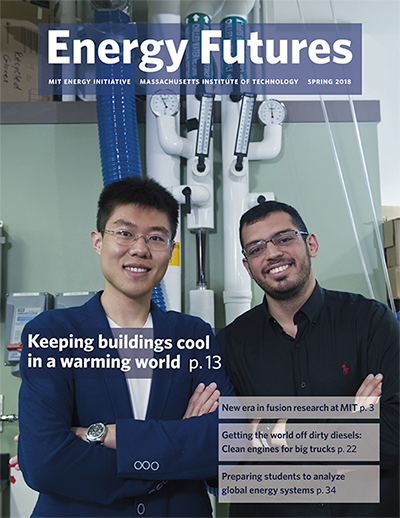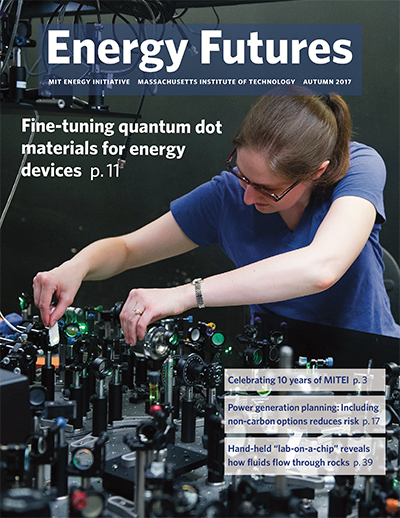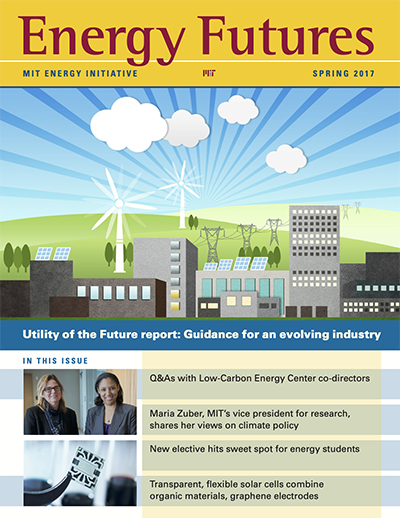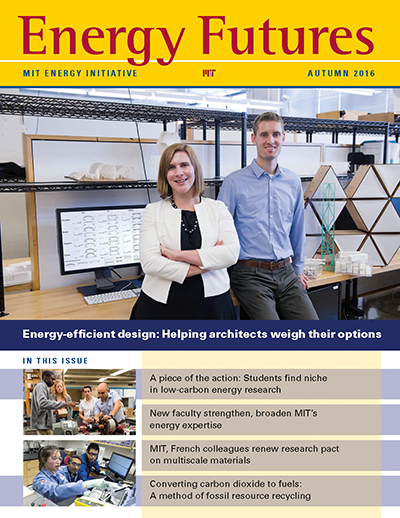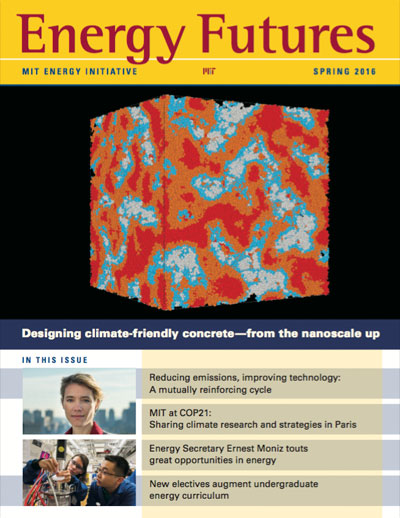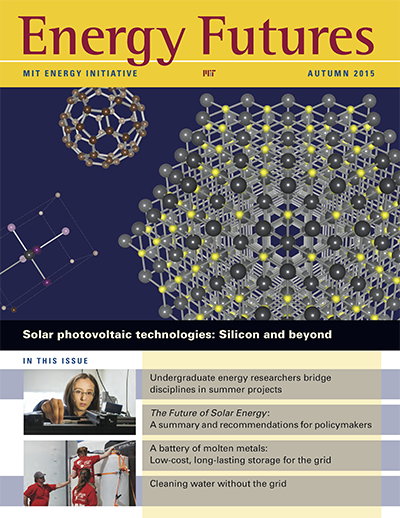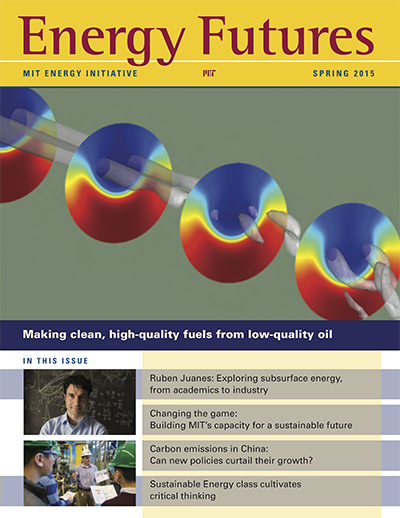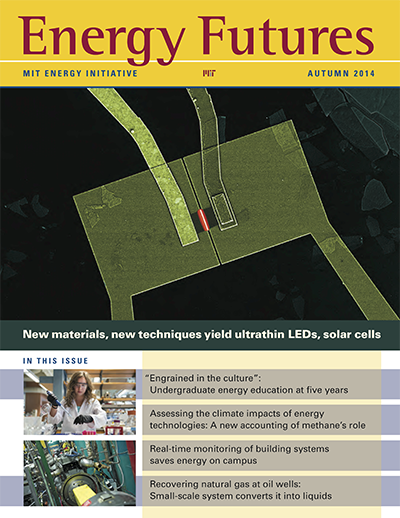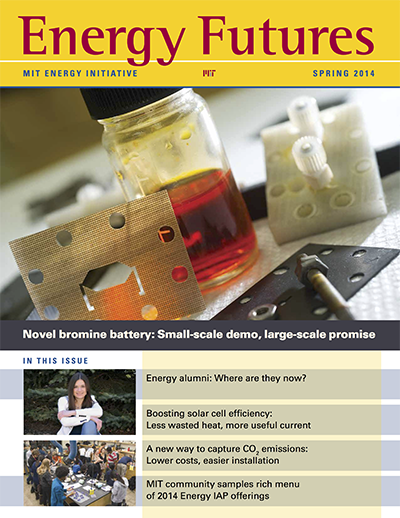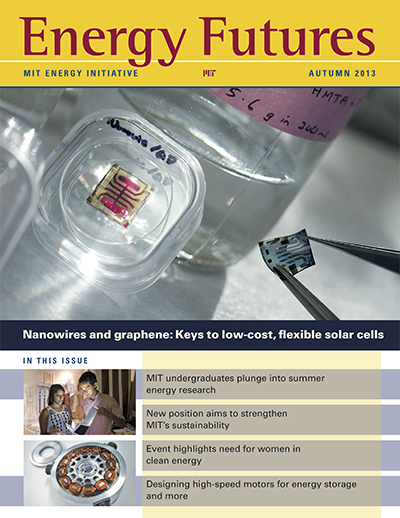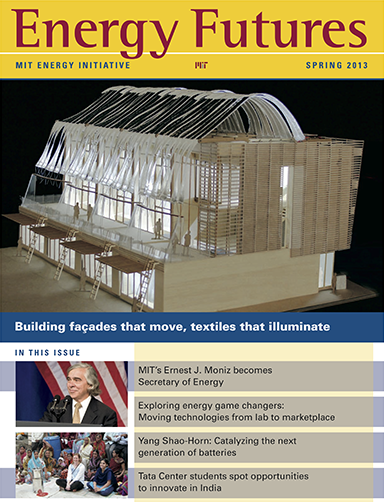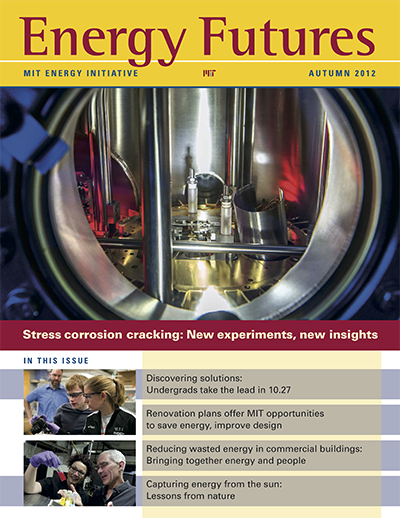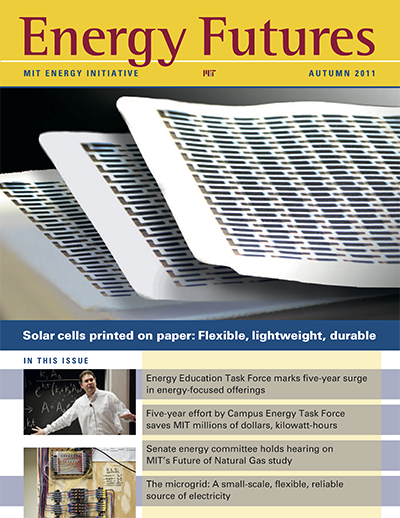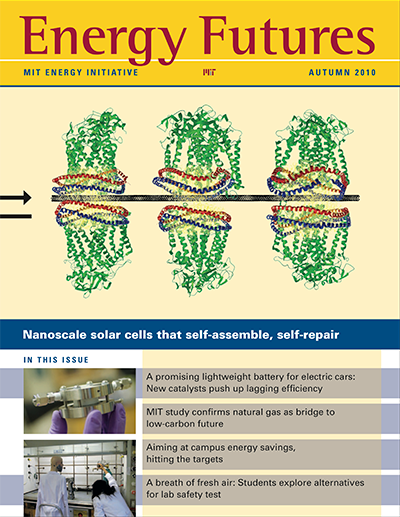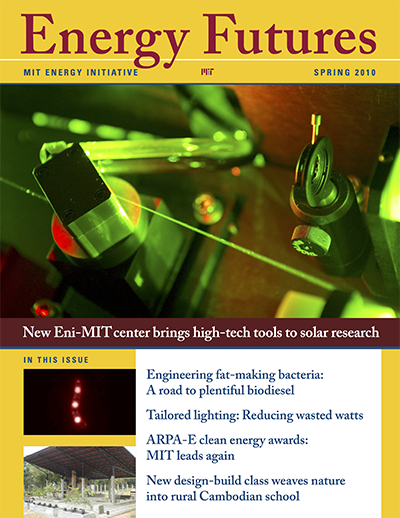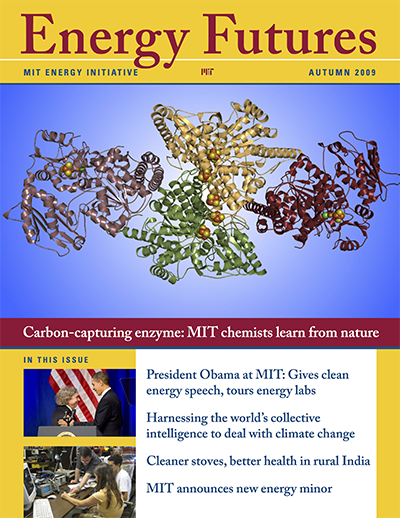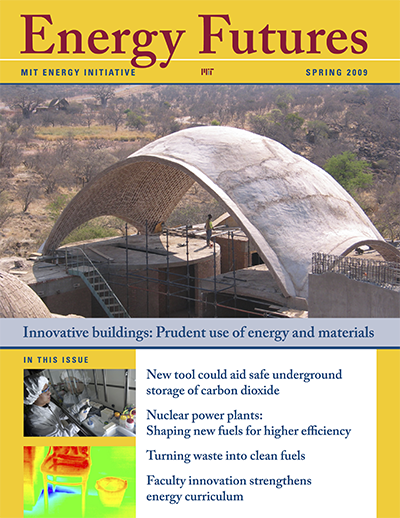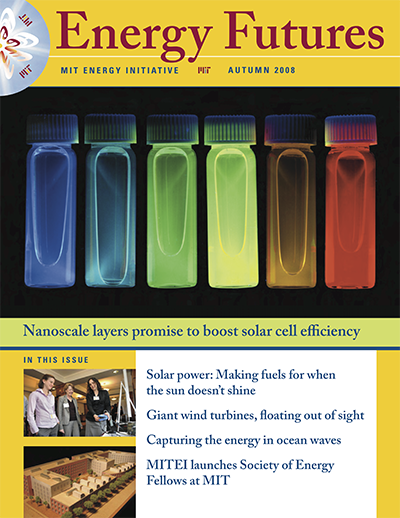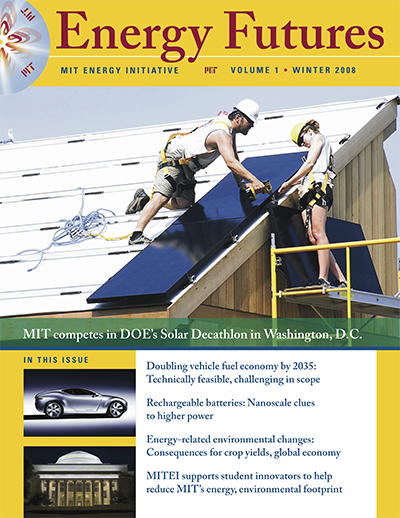Letter from the director
Dear friends,
In December 2016, we released the report from the multiyear Utility of the Future study, a comprehensive examination of the technologies, policies, and business models shaping the evolution of the electric power sector. The report provides a framework for how policymakers and regulators can proactively enable the development of a robust electric grid and a fair system of services that delivers the most value to consumers.
Events held in Washington, DC, to mark the release included a public program in which the study’s advisors and authors shared key findings; meetings with policymakers and regulators; and a presentation for MIT alumni. In this issue of Energy Futures, we share an overview of the report and hear from several of the graduate student co-authors about the insights they gained from the intensive research experience.
As the Utility of the Future study concluded, our second consortium research study in this series got under way. “Mobility of the Future” brings researchers from various disciplines together to study factors that will drive the way we drive (or otherwise get from place to place) in the decades to come. Like Utility of the Future, this study will take a system-level approach—seeking to identify barriers that policymakers and regulators should remove to improve safety, efficiency, and social equity in urban mobility.
In this issue of Energy Futures, you will also read about research breakthroughs in solar technology and energy storage—two key areas for enabling the transition to a low-carbon future. Professor Jing Kong and graduate student Yi Song have developed a new method for producing low-cost, flexible, transparent solar cells using electrodes made of nanometer-thin layers of graphene. And Professor Yang Shao-Horn and collaborators at MIT and Leiden University in the Netherlands have performed experimental and theoretical studies leading to new guidelines for designing catalysts to speed up the electrolysis of water, a critical process in many energy storage technologies.
On the policy front, we share MIT research examining international efforts to address climate change. The Joint Program on the Science and Policy of Global Change released its 2016 Food, Water, Energy, and Climate Outlook, which finds that even if all nations meet their Paris Agreement commitments, the world will exceed the 2°C maximum global temperature increase targeted for 2100 as early as 2050. To avoid this outcome, countries will need to make substantial additional R&D investments to lower technology costs and increase deployment, as Joint Program Co-director John Reilly explains.
These various research efforts demonstrate that technologies and policies cannot exist in isolation from each other. In the transition to a low-carbon future, as we continue to foster scientific innovation at MIT, we also recognize that well-designed policies and regulations will continue to be essential for ensuring that society can reap the economic and environmental benefits of deploying advanced technologies. Supporting the basic science that underpins breakthrough discoveries will likewise be crucial.
One of the nation’s foremost champions of energy innovation has recently returned to MIT: Ernest Moniz. MITEI’s founding director, Ernie recently completed an accomplished tenure as US Secretary of Energy during President Obama’s second term and has now assumed a part-time role as a professor of physics post-tenure and special advisor to MIT President L. Rafael Reif. Ernie is working on several energy, climate, and nuclear security initiatives with colleagues here and at other institutions and organizations. I would like to extend MITEI’s heartfelt thanks to Ernie for his distinguished service to our country and steadfast dedication to advancing science and low-carbon energy.
Here at MITEI, we have continued our tradition of supporting early-stage research by announcing 10 new energy research projects awarded $150,000 each through MITEI’s member-supported Seed Fund Program. These projects represent a broad swath of the energy spectrum, from basic science and engineering to policy.
MITEI has also become an academic and research collaborator in a new national consortium, the Rapid Advancement in Process Intensification Deployment (RAPID) Manufacturing Institute—the 10th institute in the nation’s network of Manufacturing USA institutes (MIT participates in seven of these centers). Announced by the US Department of Energy in January, this center convenes MITEI and other academic, national lab, and industry organizations to make important industrial processes more energy-efficient and productive while reducing operating costs and minimizing environmental impacts. Numerous MIT faculty are involved in the initiative.
Our Low-Carbon Energy Centers continue to develop as more MIT faculty become involved and member companies join centers that suit their areas of research interest. In this issue, we discuss the missions of the Center for Energy Bioscience Research and the Fusion and Magnet Research Center with their faculty co-directors. We have welcomed new members Cenovus Energy and ENN Group—both of which have also joined the centers— and have renewed our collaboration with Eni S.p.A., which has been a MITEI member since 2008 and has now joined three of the centers: solar energy; energy storage; and carbon capture, utilization, and storage.
This spring, MITEI staff and affiliated researchers have shared their work and perspectives at various conferences, among them CERAWeek in Houston, Texas—which was also well-attended by many MIT alumni. We were also pleased to participate in and support the student-run MIT Energy Conference, whose dedicated organizers put together a great program featuring global business and government leaders, including India’s minister of petroleum and natural gas, Dharmendra Pradhan.
MITEI hosted numerous student-focused events this spring as well, many of which were held at the new Undergraduate Energy Commons. We had record attendance at our Campus Preview Weekend events for accepted students and hope to welcome many of these students back in the fall as they begin their MIT journeys. Nine current undergraduates also took advantage of a new opportunity to spend their spring break installing solar photovoltaic panels for a low-income household in Los Angeles, California, facilitated by a local nonprofit solar installer.
Please don’t hesitate to get in touch with us if you have ideas for enriching the experiences of our students, supporting our researchers, or otherwise enhancing the energy ecosystem at MIT. We always appreciate our readers’ keen interest in being part of this vibrant community—whether you’re here in Cambridge coming to our events or following our work from across the country or around the world.
Warm regards,

Professor Robert C. Armstrong
MITEI Director
